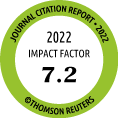|
Background:
Asthma is a chronic
inflammatory disease
that is associated
with airway
hyperresponsiveness,
tissue remodeling,
and airway
obstruction, and
that involves
coordinate
expression of
multiple
inflammatory genes
in the lungs.
Objective: To
evaluate the gene
expression pattern
in a mouse model of
asthma and assess
the effect of a new
drug, R142571, on
the gene expression
profile.
Methods: Lung
tissue from
ovalbumin-sensitized
mice was used to
examine gene
expression on the
CodeLink
oligonucleotide
mouse 20 K bioarray
platform. Data were
validated for some
genes by
semiquantitative
reverse-transcriptase
polymerase chain
reaction.
Results: Of
the 19 736 genes
represented on the
microarray,
expression of 378
genes was
differentially
regulated (215
upregulated and 163
downregulated), with
at least a 2-fold
change in expression
(P < .05). The
differentially
regulated
transcripts included
genes known to be
involved in several
different biological
processes, including
signaling, DNA-dependent
transcriptional
regulation, immune
response,
proteolysis, and
peptidolysis.
Cluster analysis of
the differentially
regulated genes
showed that at least
16 were
downregulated by
R142571 treatment at
both of the doses
used (1 and 10 mg/kg).
In addition, 46 and
29 genes were
downregulated at
doses of 10 mg/kg
and
1 mg/kg,
respectively, as
compared to the
animals treated with
vehicle.
Conclusion:
The cytokine
expression pattern
in our data,
suggests that the
murine model
exhibits a
predominantly T
helper 2-type
response, as
observed in
asthmatic human
subjects. Based on
this study, we
suggest that this
mouse model would be
an appropriate
system for screening
new drug molecules
for treatment of
atopic asthma.
Key words:
Ovalbumin.
Microarray. Lung.
Cytokines. Asthma. |



